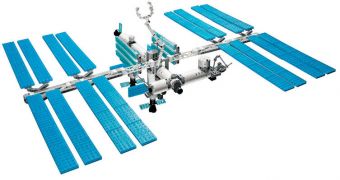The LEGO Group has sent astronauts on the International Space Station all the necessary components to construct a miniature replica of the space facility. The pieces were delivered unassembled, and now the Expedition 28 crew needs to put them together in microgravity.
This is a very difficult task, they say, but one that they are happy to take on. NASA says that the company sent 30 unassembled LEGO toy models on the space shuttle Endeavour, some of which mimic satellites, the shuttle itself and the station.
Last week, the joint crews of Expedition 28 and STS-134 declared the orbital lab complete, after more than a decade of assembly efforts, and in excess of $100 billion spent on this international endeavor.
After the shuttle departed from the station, late Sunday night, the Expedition 28 crew was left with the unassembled toys, which are part of no less than 8 educational programs that the ISS crew will participate in over the coming weeks.
In one of them, astronauts in space and children in their classrooms will construct the same LEGO replica of a satellite. The participants will then compare how long it takes to do so with and without gravity, and the kids will learn important lessons from all of this.
NASA already has a partnership with the LEGO Group, which seeks to inspire young children to explore science, technology, engineering, and math (STEM), fields that have experienced a decline in attendance and interest lately, Space reports.
“Education outreach is a big part of what we do at NASA. Just the fact that we are flying in space and the amazing things we are doing in space are very inspiring. I know when I was a kid I was inspired by the space program,” says ISS flight engineer and NASA astronaut Ron Garan.
“We have lots of different methods [to do] educational outreach, [LEGO is] one of them. I think that's one of the reasons we have the space station, to inspire the next generation,” he went on to say.
Just like NASA, the European Space Agency (ESA) is conducting educational programs from space as well. Nearly all ESA astronauts that ever lived on the orbital outpost spoke with children in schools across Europe, about the various aspects of living in space.
The international partners that manage the ISS agree that science and education are the main reasons why the ISS is now orbiting Earth.

 14 DAY TRIAL //
14 DAY TRIAL //